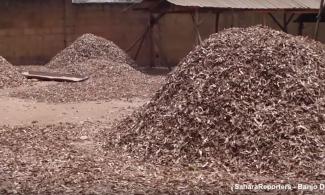
The Farmer-herder crisis is one of the intense security challenges in Nigeria. Thousands of investments and harvests are lost to the clash for food and water between farmers and cattle herders. At least, 3,600 people have been killed

The smell of stale fufu, a staple food made from cassava, permeates the air around Ojai-Apata, a small agrarian community in Ankpa Local Government Area of Kogi state. Two truckloads of cassava, on average, are transported out of the village every day, says Ali Ogalagwe, the Manager of Synergos Cassava Peels factory.
Just behind the Synergos factory is a heap of wasted cassava peels that could have translated into good money for the peasant, rural women in the community. But there they lay, like a mountain of dried wood, causing severe air pollution.
Lydia Oyewole, an environmental expert, says before Synergos’ factory, the villagers pile the brown covering of cassava tubers in different corners of the village. “Before, you can’t even stand in the community because of the smell from cassava peels,” Oyewole says as the car stops in front of the sheltered space that serves as Synergos’ processing factory.
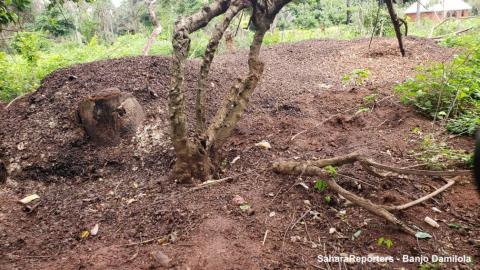
Nigeria is the world's largest producer of cassava, with about 19% of the global production coming out of the country. According to World Atlas, Nigeria produced over 47 million metric tonnes in 2013. 20.1% (9.6 million metric tons) of this production value is lost as waste. At N200 per 50kg bag, N38.4 billion is being lost as waste.
When this waste product is processed, the value addition increases the price per pack. A bag of High-Quality Cassava Peels (HQCP) sells at almost 7 times the cost of the raw unprocessed peels. A 25kg bag sells at N1,250, while 50kg bag sells at N2,500. This, no doubt, has enormous financial gain for the people and of course, a ripple effect on the economy.
Frying garri, a famous Nigerian cassava flacks, is a family trade for Amina Hamidu, a mother of five. She learnt it from her mother, but for more than 30 years in the business, she disposes of the peeled back of the cassava tubers. To her, they are waste and hold no value. Occasionally, Amina says, other villagers pick up the peels to feed their domestic animal; mostly goats.

But, Adeniyi Adediran, a consultant and animal scientist, says feeding the raw, unprocessed peels to restricted animals can be poisonous both to the animal and humans who consume the flesh.
"Under natural feeding system," he begins. "Animals have an inbuilt mechanism that helps them check themselves if they start to taste a toxic feed. So, they will eat as much as it is not harmful to them. The challenge comes when animals are confined and are feed under zero-grazing— when the feed is bought to them. The animals have no choice; they have to eat it. Small ruminates in particular if they eat beyond a certain threshold of the peels (unprocessed), they begin to lose their hair on their body because it is toxic to their system and chances are that residues from the cyanide can remain in the meat when the animal is slaughtered."
Technology for High-Quality Cassava Peels (HQCP)

The majority of cassava processors are ignorant of the economic value of these peels. "You can only produce garri and fufu from the cassava, and nothing else," a local cassava processor in Ogun State told Premium Times in a recent report. Contrary to this claim, not only can the white, fibre part of the cassava tuber be converted to varieties of products, the peels are also of economic value.
Apart from the vast economic waste in disposing tonnes of Cassava by-product, it constitutes a great deal of environmental pollution. The rotten wastes produce a nauseating smell that pollutes the surrounding air. Empirically, experts say the cyanic acid in cassava can also cause water pollution. Adediran says when cassava decomposes, the toxins in it get into the soil, which can be washed down through erosion and pollutes surrounding wells and water bodies.
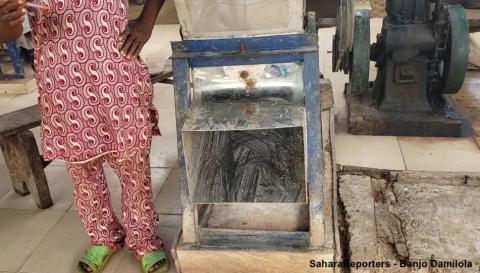
In some areas, the peels are sun-dried on bare floors for a period of two to three days. This method can only be done during the dry season and fed to ruminant animals, such as goats and cows alone. ILRI says the improper and unhygienic method of drying can be poisonous because of the aflatoxin, poisonous fungi found on crops, content. But it is also neither profitable nor can it be feed to monogastric animals.
"As a result," the research institute finds, "farmers and feed industry do not have access to process peels at the desired quality and sufficient quantity."
In solving this problem, scientists from CGIAR, the world's most extensive global agricultural innovation, developed a technology that reduces drying time to 3 hours. The institute also developed derivatives of the peels that can now be fed to monogastric animals and a whole range of other livestock, including birds and aquatic lives. The processed feeds come out in various textures suitable for different kinds of livestock. There is the fine mash, fed to birds and marine lives, the coarse mash which can be eaten by cattle, and the wet mash suitable for pigs. These derivatives also have varying shelve lives ranging between 2 weeks to 6 months.

This innovation was first reproduced by ILRI, with hundreds of cassava farmers trained on how to incorporate the process in the cassava processing chain. However, Synergos, led by Adewale Ajayi, is the first and only company that has commercialized this technology, thus creating wealth for local women who collect these peels and sell to the company. So far, there are two factories sited in Kogi and Benue because of the huge amount of cassava produced in these states. These factories continue to provide incomes to many of the residents in their host and surrounding communities.
Agata Ainoko, a fair, middle-aged lady, makes her living from collecting and selling of cassava peels to Synergos. It creates an additional income, apart from what the factory pays her as a worker. Bent over a pile of mixed cassava waste, Agata separates the stomps from the peels, getting them ready for the grating machine. "This is where I make money from," smiling Agata says as she sorts through the cassava skins.

Reduction in cost of production
Livestock farmers expend 70% of production cost on feeds. This high cost of production is because many of the livestock feeds are maize-based, thereby, given rise to stiff competition between humans and livestock for maize. Although Nigeria is the largest producer of maize in Africa, the capacity of the continent is 6.5%, a miserly figure compared with the United States of America that produces 46% of global production. Despite the meagre production strength from Africa, the continent accounts for 30% of the entire world's consumption. The shortfall is made up for by importation. In Nigeria, livestock consumes 95% of the total eight million tonnes produced in the country annually, yet many feed millers rely on importation of maize to provide feeds. The high demand for maize significantly raises the cost of maize-based feeds.
The HQCP has hugely subsidized the dependent on maize for animal feeds and thus reduced the competition between livestock and human. Ausmus Uhuoto Akomodi, consultant and manager of a small scale livestock farm in Lokoja, says he reduces the cost of feeding his arrays of animals by 50% since introducing the cassava peels feed.
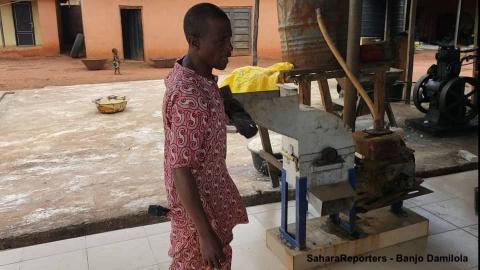
"Every livestock farmer will tell you that reducing the cost of production to maximize profit is important to every farmer," Akomodi says. "I have substituted 30% of the livestock feeds with the fine cassava mash, and that has brought down the cost of feeding by 50%."
Akomodi discloses that he is still experimenting with the feed, and so far, has not noticed any adverse side effects in the livestock exposed to the feed. But Akomodi’s experiment is merely a personal quest. Amo Farm Sieberer Hatchery Limited (AFSH), a large scale livestock company, exposed its livestock to HQCP in a research experiment conducted by ILRI.
"Layer and broiler birds fed the HQCP mash at a replacement rate of 60kg/ton, performed similarly on feed intake, conversion efficiency, egg production, growth rate and achieved 10-12% lower feed costs compared with control birds on a maize-based diet," the research shows.
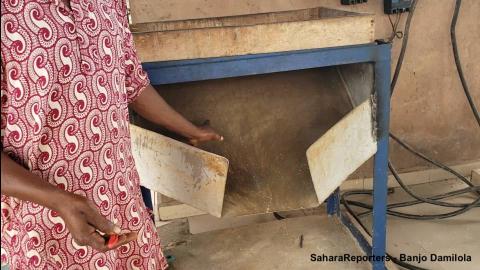
According to the research, it implies that Amo-Byng substituted only approximately 7% of its maize-based feed with the fine cassava mash and recorded a 10-12% reduction in its production cost.
Premium Fish Feed limited, a feed company in Ikorodu area of Lagos has fully adopted HQCP hence able to cut down feeding cost. "We have been using been using the HQCP for about a year," says the manager of Premium Fish Feed. "It is a good material and does not reduce the quality of the livestock". However, he mentioned that HQCP could not fully substitute maize in poultry and fish feeds. The reason for this, he says is because of its low protein content but pig, cattle, and other ruminants can feed on HQCP entirely.

Potential Solution for farmer-herder clash
The Farmer-herder crisis is one of the intense security challenges in Nigeria. Thousands of investments and harvests are lost to the clash for food and water between farmers and cattle herders. At least, 3,600 people have been killed in the clashes between farmers and nomadic herders since 2016, according to Amnesty International.
Asides the clashes that have led to several bloodlettings, farmers have also had to deploy stringent measures in ensuring that they reap the maximum harvest. Peter Lawal, a 21-year-old farmer, and his team of partners lost N3.5 million investments on a 62-hectares-cassava plantation when cattle entered and grazed on the five months old cassava plants. Peter and his team lost the investment they had made on the farm.
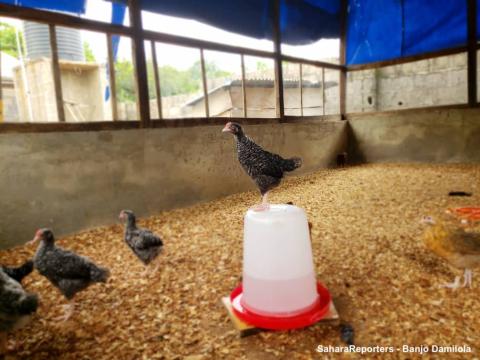
This experience has pushed many farmers to put in a measure that has led to the death of cattle. At a young farmers' gathering in Lagos, one of the farmers suggested hedging cassava plantation with jatropha or castor seed, poisonous plants, capable of killing the cattle if consumed.
This problem can be mitigated by the used of cassava peels as feeds for the cattle. The HQCP is a quality feed for animals and can be mixed with other nutritious components to increase the growth rate of cattle. This, is, however, best used when there is a structured ranching system where the calves are fed to enhance growth and beef production. Countries with the highest percentage of beef production in the world engage in ranching where the cattle are nourished for high productivity.

Akomodi, who also rears cattle alongside his poultry and fish pond, says his calves develop faster than an average calf raised in the nomadic pastoral system.
"The reason is simple," he says. "Calves use up most energy roaming from places to the other whereas, these are stationed. Hence, their energy is conserved and used us for development."
The cost of feeding the cattle in the ranching system is also significantly reduced because of the HQCP which are cheaper and has similar energy content as maize-based feeds.
There are challenges
The major challenge in the adoption of HQCP by herders, according to Victor Adejoh, the deputy country coordinator at Synergos, is that the herders are unwilling to pay for the product.
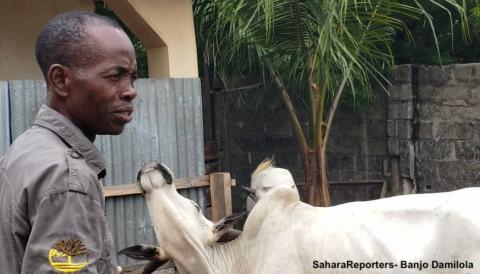
Notwithstanding, there is also the challenge of prompt collection and transportation of the peels to the processing units. 30 out of the 36 states in Nigeria produce cassava whereas there are just two commercial factories in the country, apart from ILRI's factory. With tonnes of cassava peeled daily, many of the peels still go to waste as there is no system to promptly collect them for processing. If the peels are not processes within 24 hours, it begins to develop toxic content thus become unsuitable for processing.
Also, the processing machines are expensive for an average Nigerian farmer. "The imported machines are too expensive, and the fabricated ones cannot meet up with the demand. The system also has to be syndicated for seamless production such that as the machine peels, it sends the tuber for processing and the peels also go in another direction for processing. This is currently not so," Adediran says.
Also, Adejoh says there is the issue of standardization to ensure that the HQCP is produced in a controlled and hygienic environment remains one of the challenges as the technology gets more popular.
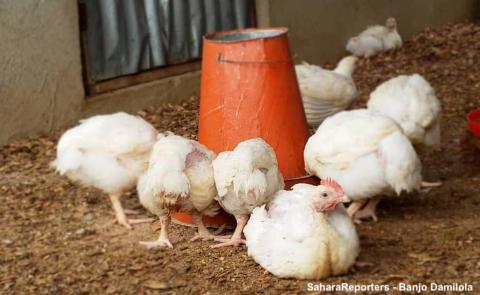
Potential for scale
As the innovation gets more popular amongst livestock farmers, the demand becomes higher, and the existing factories cannot meet up. Premium Feeds alone needs about six tonnes of HQCP per week. With other smaller livestock farmers like Akomodi, there is a vast untapped market that the current supply is unable to meet.
Synergos is investing in setting up processing units within cassava clusters that are unwilling to invest in the HQCP production. "We are looking at getting aggregators that might not be interested in doing the peels directly but might want to take up the cake and send it to the feed millers," says Lydia.

Adejoh says the factory is looking at two major approaches in scaling up to meet market demands. The medium-scale factory would be encouraged across cassava clusters while the large-scale factory will be a stand-alone where peels are brought in for processing.
He mentions that the Synergos is working with the Technologies for African Agricultural Transformation (TAAT) and the African Development Bank (ADB) to set up factories in other parts of the country including Taraba, Niger, Oyo and Ogun states.